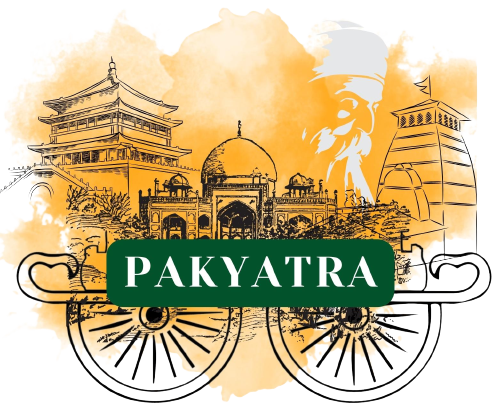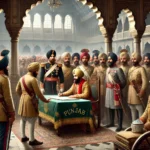PAK YATRA is a tour operator company providing tour services and facilitates Sikh community from different parts of the world.
Detailed History of Gurdwara Khara Sahib, Bhaike Mattu
Importance of this Place:
Gurdwara Khara Sahib holds immense historical and religious significance for the Sikh community. It commemorates the brief stay of the sixth Sikh Guru, Guru Hargobind Sahib Ji, in the village of Bhaike Mattu during his journey back from Kashmir in 1620. The gurdwara serves as a place of worship, reflection, and pilgrimage for devotees seeking spiritual enlightenment and blessings.
Story Behind:
Guru Hargobind Sahib Ji, also known as Saccha Badshah (The True Emperor), halted in Bhaike Mattu village during his return from Kashmir. It is said that Guru Sahib exhorted the people to follow the teachings of Guru Nanak Sahib and preached against the use of tobacco. The gurdwara stands as a testament to Guru Sahib’s message of spiritual and moral guidance, inspiring visitors to lead virtuous lives.
Location:
Bhaike Mattu village is situated approximately two kilometers southeast of the Police Station Noshehra Virkan in Tehsil Gujranwala, Pakistan. The gurdwara is located just before the entrance to the village.
Preservation Efforts:
Despite its historical significance, Gurdwara Khara Sahib is currently facing challenges of neglect and misuse. The main building is intact, but some parts of it are neglected, and animals are fed directly outside the premises. Efforts are needed to preserve and restore this sacred site to its former glory.
Architectural Marvel:
The architectural beauty of Gurdwara Khara Sahib is noteworthy. The building features black and white tiled floors, decorated walls adorned with paintings of flowers, and intricately designed floral patterns on the ceiling. Carved inscriptions and plaques bearing the names of those who contributed to its repair and maintenance add to its aesthetic appeal.
Historical Evolution:
Gurdwara Khara Sahib has undergone significant historical evolution since its construction. Originally built in Samvat 1990 (1942-1945), the gurdwara served as a place of worship and community gathering for Sikh devotees. Tragically, it had to be abandoned soon after its construction due to the partition of Punjab in 1947, leading to the migration of communities. Despite its abandonment, the gurdwara remains a symbol of Sikh heritage and spirituality.
Background:
The history of Gurdwara Khara Sahib is deeply rooted in the Sikh religious tradition and the teachings of Guru Hargobind Sahib Ji. It stands as a reminder of Guru Sahib’s transformative influence on the lives of his followers and the communities he visited during his travels.
Historical Significance:
Gurdwara Khara Sahib commemorates the visit of Guru Hargobind Sahib Ji to Bhaike Mattu village and his teachings on spiritual enlightenment and moral conduct. It serves as a sacred site where devotees pay homage to Guru Sahib and seek blessings for spiritual fulfillment and guidance in their lives. Despite its current state of neglect, the gurdwara remains a significant historical and religious landmark in Gujranwala district.
Conclusion:
Gurdwara Khara Sahib, located in Bhaike Mattu village, is a testament to the rich cultural and religious heritage of the Sikh community in Pakistan. Despite facing challenges of neglect, the gurdwara continues to inspire devotees with its historical significance and architectural beauty. Efforts are needed to preserve and restore this sacred site for future generations to cherish and appreciate.




